How to refuse central heating: legal and technical aspects
How to abandon the central heating in an apartment building? What benefits will this solution bring? How to substantiate your wishes? Finally, how to replace the CO? Let's try to answer these questions.
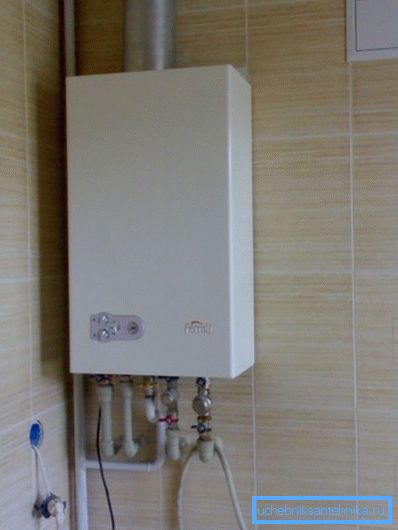
Why do you need it
And in fact, is it worth starting this event?
As a person who has used both central and autonomous heating, the author must fully approve such a decision.
There are two reasons for this.
- If, in the case of DH, the heating season begins and ends at a specific time, then autonomous heating allows you to set the temperature regime that is convenient for you at any time of the year. If you have a cold day in summer, nothing will prevent you from heating your apartment in the most economical way.
Note: in the winter you, too, will be able to extremely flexibly regulate the operation of the heating system depending on the actual need for heat. If it’s a sunny day, you can completely stop heating one or more rooms; it is possible and easy to reduce the consumed thermal power to a minimum.
- An even more weighty argument is the price of heating a square meter of your apartment. Autonomous system allows you to reduce costs at least twice.
Due to what?
- Any modern heating boiler is controlled by a thermostat and gives just as much heat as is necessary to maintain the desired temperature in this particular room.
The central heating station should provide the minimum temperature fixed in SNiP in all apartments of an apartment building without exception - both on the sunny side and where the heat consumption sharply increases in windy weather. It is clear that in such conditions the consumption of thermal energy will be somewhat redundant.
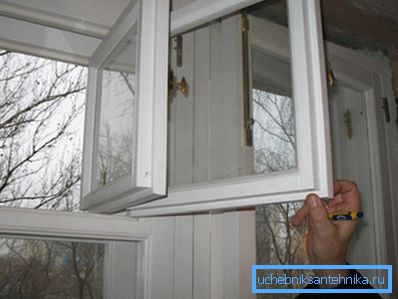
- Losses of heat on the road with stripped insulation, in the basement with broken light windows or in the attic, open to all winds, also put a burden on your budget. Even under ideal conditions, transporting the coolant over a distance of several kilometers would mean significant loss of thermal energy. It is clear that the heat producer will include these costs in its tariffs.
In the case of an autonomous heat source located in your apartment, these losses are absent by definition.
- What do you think, at the expense of what revenues is formed the wage fund of engineers, planners, drivers, mechanics and accountants of organizations that transport and produce heat? Right. Their work is paid by the consumer of services - the owner of the apartment.
- Do not forget about the maintenance of heating plants and highways, risers and elevator nodes. Current and emergency repairs, welding and valve replacement are also included in the tariffs.
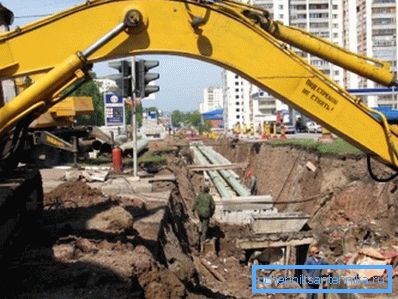
No, of course, the same picture is with gas: you will pay for the repair of the gas pipeline, the work of accountants, and a lot of seemingly unnecessary things. However, you will pay them in the case of the CO: after all, energy costs are also taken into account when setting tariffs.
Objections
Your refusal of central heating will in no way cause delight among representatives of housing organizations. In fact, he will be hampered by all means.
Do not rush to accuse officials of short-sightedness and greed: for good reason.
- If you stop paying for heat, this will mean a reduction in receipts not only for salaries of workers in housing and public utilities and heating networks, but also for repair of highways and valves. Meanwhile, the number of disconnected from one apartment will not decrease.
- Reduced and the flow of money in the city and federal budgets. Part of the money you pay for heat and transferred to the accounts of the respective organizations is paid by them in the form of taxes and is spent on building and maintaining roads, kindergartens, schools, street lighting and fighting crime, paying pensions and benefits.

- A housing organization that does not have access to your housing will find it difficult to control the absence of unauthorized connections.. Risers from your apartment will not go anywhere; You will have a great opportunity to stop paying for heat, but use it.
By the way: on the upper floors in houses with bottling, the problem is solved by installing a jumper on the floor below.
- Due to the inevitable leakage of heat through the walls and concrete floors, you will be able to use the heat that the neighbors pay.. There is no getting away from physical laws: where there is a difference in temperature, heat flow inevitably occurs there.
- The notorious temperature difference will lead, among other things, to accelerated destruction of supporting structures, detachment of plaster and wallpaper.
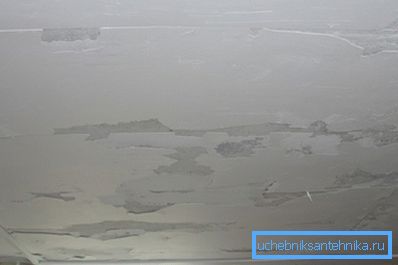
- In unheated or poorly heated rooms, the freezing of walls with the attendant manifestation of fungus and condensate is inevitable.. The latter will quickly appear wet spot on the ceiling of the neighbors below.

- Not only that: lack of heating can lead to defrosting of water supply lines.. While looking for the owner of the apartment, tenants up and down the tower enjoy the lack of water.
The price of unauthorized disconnection from the central heating station is a fine and restoration of the initial configuration of the heating system at its own expense.
The impossible is possible
So is it possible to abandon central heating in a city apartment, despite such weighty counterarguments? Yes, but with certain limitations.
Collective shutdown
According to the current housing legislation, the transition to autonomous heating is still provided, but only by the whole house or (if there are several elevator nodes in the house) by an entrance. The elevator is either completely disconnected from the heating main, or (in the case of hot water supply), it is cut off from the heating circuit with jamming of the valves with pancakes and sealing the flanges.
How to refuse heating in the apartment by the house or an entrance?
Here is a brief guide to this quest.
- A general meeting of tenants is held. The result of the meeting is recorded.
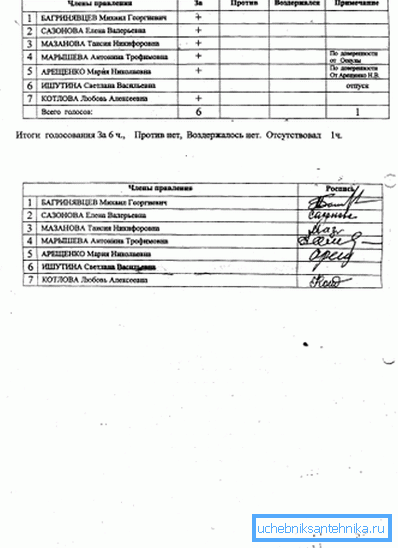
- When the local self-government body, a conciliation commission is created, to which this protocol is submitted along with the application for disconnection of the CO.
Note: the commission may respond to applications with a refusal in those cases if the transition to autonomous heating disrupts the work of the heat supply of the house or district, as well as if the local gas or electricity lines are not designed for the increased load. Residents, however, may offer to upgrade them at their expense.
- If a positive decision is made, the commission gives the representative of the tenants a list of organizations that are required technical conditions for the drafting of the project.
- TU are transferred to the project organization.
- After the project is completed, it is accepted by each organization from the list. What kind of coordination is needed?
| Organization | Subject of approval |
| Heating network | No threats to the heat supply of a part of the house or the surrounding houses when a group of apartments switches to autonomous heating |
| Gorgaz | Lack of gas lines overload during operation of gas heating boilers |
| Energy company | No overloads of power supply lines when switching to heating with electricity |
| Department of Architecture | No damage to buildings that are architectural monuments when installing coaxial pipes for air extraction and combustion products |
| Housing organization | The technical possibility of the termination of centralized heat supply, the absence of threats to the supporting structures |

- After the project is accepted, it is transferred to the licensed organization for the production of works.
- After they are completed, the result is again accepted by representatives of all interested organizations.
Individual shutdown
Is it possible to refuse heating in an apartment individually, regardless of the neighbors? Relatively recently, a loophole appeared in the legislation that allows this to be done, despite the active opposition of local authorities. Its existence has already been confirmed by several court decisions in favor of the tenants.
The Law of the Russian Federation on Heat Supply (Art. 14 p. 15) uses the following wording: It is prohibited to switch to an individual heating scheme using heat sources, the list of which is determined by the current connection rules minus cases arising from the heat supply scheme.

Please note: the law does not prohibit individual heating in general, in general. It prohibits the use of heating equipment from a well-defined list.
The list itself (of course, not specific models of equipment, but the requirements for them) is contained in Resolution No. 307 of April 6, 2012 (paragraph 44).
According to the decree, the use of boilers that do not meet the following requirements is prohibited:
- The burner of the gas boiler must be closed. The air intake must be organized from the street.
- The boiler must have protection against overheating of the coolant and against gas leakage when the burner flame is extinguished.
- The working temperature in the water heating circuit during the boiler operation should not exceed +95 ° C, the operating pressure - 1 MPa.
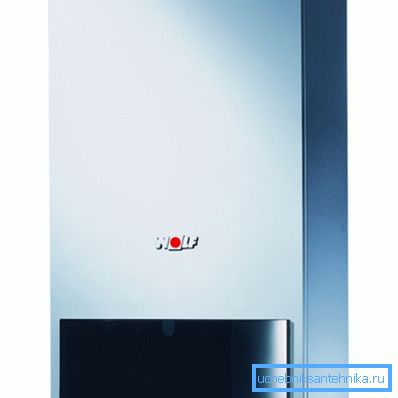
It is worth proving that the boiler you purchased satisfies all the above conditions - and the refusal to switch to individual heating will be recognized by any court as null and void.
What to do after receiving the court decision? The answer can be found in the Housing Code (paragraph 25, paragraph 26). AT
conciliation commission provided:
- Application for refusal of central heating.
- The registration certificate of housing.
- A document certifying ownership.
- Written consent of family members to refuse from the CO.
- Previously obtained permission from the department of architecture.
- A working draft of individual heating and a scheme for changing the communications central heating in your apartment.
After receiving permission, it remains only to submit an application to the local housing organization and pay for the dismantling of heating appliances. Instead of batteries, jumpers are placed. At this your novel with centralized heat ends.
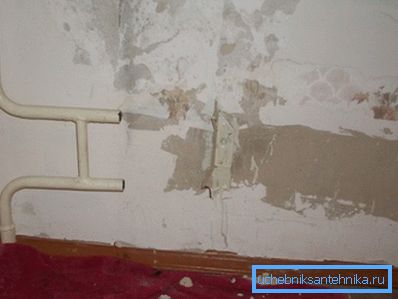
What's next
What equipment is better to choose if you are going to install independent heating with your own hands?
Boiler
The optimum choice from the point of view of profitability and usability is a condensing boiler with a storage water heater.
Why precisely he?
- The condensation scheme is more economical: it increases the efficiency of the boiler by 9-11% compared to classic gas boilers.
- Accumulative water heater ensures stable temperature of hot water. Whoever used a flowing gas column at least once will understand the meaning of the recommendation: an attempt to take a shower results in a continuous struggle with the mixer.

A typical modern boiler is equipped with at least a security group - an air vent, a pressure gauge and a safety valve. Sometimes its design includes an expansion tank; in other cases, a membrane tank with a capacity of 10% of the total capacity of the circuit is mounted at any point of the autonomous system.
Pipes
The most practical solution is aluminum-reinforced polypropylene. Reinforcement does not so much increase the strength of pipes (it is already excessive for an autonomous circuit), but rather reduces thermal expansion.
Batteries
Our choice - sectional aluminum radiators. They combine low cost with a decent appearance and excellent heat dissipation (about 200 watts per section). Each radiator is equipped with an inlet valve, a choke or thermal head at the outlet and a vent in one of the upper plugs.

Conclusion
Is it worth it to spend a lot of time, nerves, effort and money that will provide savings and comfort in the future - it's up to the reader. The video attached to the article, as usual, contains additional useful information.
Successes!